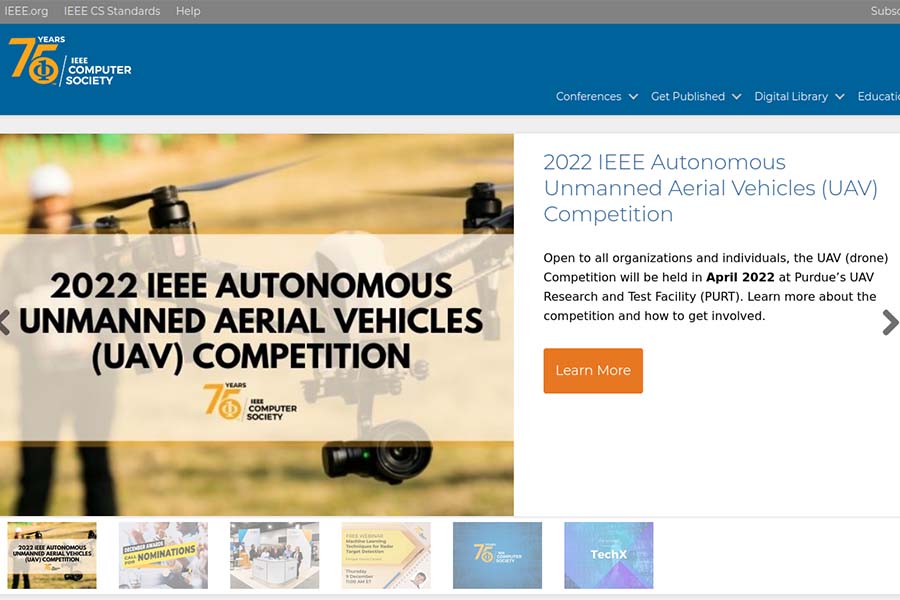Purdue-sponsored UAV competition is set for April, earns international attention
Information about the 2022 IEEE Autonomous Unmanned Aerial Vehicles (UAV) Competition, to be held in April at Purdue UAS Research and Test (PURT) facility, has landed on the homepage of the Institute of Electrical and Electronics Engineers (IEEE) Computer Society website.
A full internal web page is dedicated to information about the event.

“PURT has the largest indoor motion-capture environment in the world, and we think it is the best possible place to hold this competition,” said Mung Chiang, executive vice president for strategic initiatives and the John A. Edwardson Dean of the College of Engineering. “We are honored that IEEE recognizes the importance of this competition and chose to shine a light on the innovative and state-of-the-art UAV technology we have here at Purdue.”
The event’s main organizer is James Goppert, managing director of PURT and lecturer in the School of Aeronautics and Astronautics. Yung-Hsiang Lu, professor in the Elmore Family School of Electrical and Computer Engineering, also has been instrumental in making the competition a reality.
The competition is open to any organization (including non-profit and for-profit) or individual. PURT is an indoor facility located at Hangar 4 of the Purdue Airport and is part of the new Aerospace District. To be eligible, UAVs need to fly autonomously (i.e., without a teleoperator) and follow one moving object (a programmable model car). The UAV that can follow the target moving object at the desired distance the longest (measured in seconds) wins. The competition has two tracks: The first is software only using a common hardware platform. The second track allows contestants to bring their hardware.

“We’ll set our scaled city up and have an autonomous rover driving around and maybe drive through some underpasses where you can’t see it briefly and have a drone following this vehicle,” Goppert said, explaining one part of the event. “It’s going to be the first major UAV competition we’re having here at Purdue. I’m really looking forward to it. It’ll be great for students, and it’ll be a good motivator for them to push themselves to see how much they can pull off.”
The contest has two stages. The first uses a simulator for qualification. Each team can submit up to seven solutions; the best one is used. The top 10 teams in the first stage qualify to move forward. In the second stage, all teams use the same hardware (PX4 Vision) selected by the organizing team for launching the UAVs in Purdue’s laboratory. Each team has three chances, 10 minutes each. The highest score is used for selecting the winners.
The Purdue Aerospace District, still under development at Purdue Research Park, will include: the Hypersonic Ground Test Center (HGTC); the 65,000-square-foot Hypersonics and Applied Research Facility (HARF), which will house the only Mach 8 quiet wind tunnel in the world; and the Hypersonic Pulse reflected shock/expansion tunnel (HYPULSE). In addition, Rolls-Royce is expanding its already large footprint at the district with new test facilities to be used to develop high-altitude and hybrid-electric engines to power the next generation of U.S. military aircraft.
This competition is supported in part by IEEE and the National Science Foundation (CNS-2020430).
